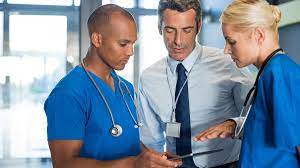Want help to write your Essay or Assignments? Click here
Lack of proper education on patient with type 2 diabetes
Locating the Best Evidence
Often, type 2 diabetes patients lack proper education mainly because of the different barriers that they face as well as the receiving education that lacks a proper algorithm. Therefore, there is a great need for these measures to be acted upon so that the patients can realize more positive outcomes. Mshunqane, Stewart and Rothberg (2012) indicated that diabetes type 2 is associated with numerous complications, many of which can cause death if not managed appropriately.
In addition to this, at the worldwide level, the disease is acknowledge as a main challenge that nags the policymakers each day. There is presently some staggering statistics of the increasing prevalence as well as the linked economic and health impact.
Further, the World Economic Forum, World Health Organization, as well as the United Nations recognize the challenge. All these bodies suggest for collective dedication to improve the life quality of the patients as well as prevent the disease. They are clear that the challenge is universal, urgent, and critical. There is also the acknowledgment that the disease is serious for two main reasons (Stults-Kolehmainen & Sinha, 2014).
First is the health impacts linked to it which are more critical including increased likelihood for lower limb amputations, blindness, heart attacks, kidney failure, as well as stroke. Second, there are indirect and direct costs which are a major drain on the healthcare budgets as well as productivity.
The issue is very urgent considering that its prevalence is rising. Moreover, managing the complications associated with the disease is very costly, same as incorporating appropriate measures to ensure that the patients lead a high quality and independent life. The mentioned bodies also agree that proper education is one of the strategies through which the disease can be prevented and managed efficiently.
However, there are a number of barriers that prevent this and the education algorithm normally used is inappropriate. Therefore, this systematic review will aim at finding information suggesting the appropriate algorithm as well as the common barriers as well as how they can be addressed.
Want help to write your Essay or Assignments? Click here
Methods
Search strategy
Peer-reviewed academic journals will be sought from different databases, and these will be used to conduct the systematic review (Lee et al., 2013). The intention will be creating a proper algorithm on diabetes type 2 education, as well as identify some of the barriers to proper education and how they can be addressed. The databases to be used for the systematic review are CENTRAL, Social Science Citation Index, Science Citation Index, PSYCLinfo, Medline, ERIC, and CINAHL.
The references to the articles that were selected were also evaluated for leads. Reading the reviews was necessary as it helped identify if the article was appropriate. In relation to the inclusion criteria, there was selection of articles that were not older than five years. Particularly, there was selection of those discussing the barriers to proper diabetes type 2 education and their solutions, and those discussing proper education standards (Kapoor & Kleinbart, 2012).
Critically Analyzing the Evidence and Synthesis
Proper education algorithm
Type 2 diabetes education preventive measures will be informed to all the people through local barazas. This would ensure that all people engage in appropriate lifestyles to prevent the disease. Cultural competent educators, and those with proper listening and communication skills will be used to offer the education so that no one can be left behind (Garber, Gross & Slonim, 2010).
It will be necessary to educate the patients on all aspects of the disease including the causes, risk factors, predisposing factors, preventive strategies, available treatments, and management. In addition, awareness on how a patient can ensure self-care should be offered, same as the complications and the direct and indirect costs that a family can suffer because of the disease.
Moreover, the educator should go into details when elaborating on the preventive measures including the diet and physical activity. The more the patients and all people know about the disease and how it is connected to other chronic conditions, the more efficiently they can engage in self-care (Green, 2014).
Barriers and addressing them
for patients to be able to receive the recommended type 2 diabetes education, they should really be concerned about their healthcare and ready to access or seek quality medical education. However, because of the ignorance some patient have, they prefer using over-the-counter medications or seeking traditional medicine men. They never seek the quality healthcare services because of their ignorance and low socioeconomic backgrounds.
Therefore, even the use of preventive services among these patients is very minimal. To address this, the local authorities will be given a chance to mobilize people from their living areas, so that education can start at the grassroots level before even being offered at the healthcare institution (Zoepke & Green, 2012).
In addition, there are many elderly people suffering from type 2 diabetes and with hearing, memory, and vision challenges. These will be offered the education in the presence of caregivers who can assist them around (Chijioke, Adamu &Makusidi, 2010).
Feasibility, Benefits, and Risks
Feasibility
The project of delivering proper education to the type 2 diabetes, patients is feasible, especially if the most appropriate education is being delivered, with a consideration of the personal factors, and if the barriers that might hinder the education have been considered and measures to address these put in place. Healthcare providers would only need to offer patients attending the institution for medical care services the pamphlets containing all the necessary information.
However, when dealing with type 2 diabetes patients, it would be necessary to find out first what they already know and later creating awareness while dispelling the misconceptions. This would be relatively cheap. It would also be necessary to explore other factors that affect individual patients so that advice can be offered (Rosenstock & Owens, 2008).
Barriers
After proper education is offered and the barriers to it addressed, some patients might still lack the funds to purchase even the affordable local foods. Considering that some patients might be elderly, there might be issues such as improper vision, hearing loss, and memory loss, which might influence practice of the education.
Benefits
Ensuring that the patients are receiving proper education and implementing it is essential in that it can go a long way in reducing the high prevalence of the disease, preventing complications, reducing the high costs needed to treat and manage the condition, as well as the losses related to loss of productivity and need for a higher quality of life (Ruffin, 2016).
Risks
Some of the anticipated risks include limited resources to ensure that adequate and proper education on type 2 diabetes is being delivered to the patients (Valencia &Florez, 2014). In addition, there might be absence of cultural competence professionals to deal with patients from different backgrounds. In addition, tracking the patients at their homes to ensure that they are implementing the proper education appropriately can be difficult and costly.
References
Chijioke, A., Adamu, A. N., &Makusidi, A. M. (2010). Mortality patterns among type 2 diabetes mellitus patients in Ilorin, Nigeria : original research. Journal of Endocrinology, Metabolism and Diabetes in South Africa, 15, 2, 79-82.
Garber, J. S., Gross, M., & Slonim, A. D. (2010). Avoiding common nursing errors. Philadelphia: Wolters Kluwer Health/Lippincott Williams & Wilkins.
Green, B. (June 06, 2014). Diabetes and diabetic foot ulcers : an often hidden problem : review. Sa Pharmacist’s Assistant, 14, 3, 23-26.
Kapoor, B., & Kleinbart, M. (2012). Building an Integrated Patient Information System for a Healthcare Network. Journal of Cases on Information Technology (jcit), 14, 2, 27-41.
Lee YK, Ng CJ, Lee PY, Khoo EM, Abdullah KL, Low WY, Samad AA, Chen WS, & Lee, Yew Kong. (2013). What are the barriers faced by patients using insulin? A qualitative study of Malaysian health care professionals’ views. Dove Press.
Mshunqane, N., Stewart, A. V., & Rothberg, A. D. (January 01, 2012). Type 2 diabetes management : patient knowledge and health care team perceptions, South Africa : original research. African Primary Health Care and Family Medicine, 4, 1, 1-7.
Rosenstock, J., & Owens, D. (January 01, 2008). Treatment of Type 2 Using Insulin: When to Introduce?.
Ruffin, T. R. (January 01, 2016). Health Information Technology and Change.
Stults-Kolehmainen, M. A., & Sinha, R. (January 01, 2014). The Effects of Stress on Physical Activity and Exercise. Sports Medicine, 44, 1, 81-121.
Valencia, W. M., &Florez, H. (January 01, 2014). Pharmacological treatment of diabetes in older people. Diabetes, Obesity & Metabolism, 16, 12, 1192-203.
Zoepke, A., & Green, B. (January 01, 2012). Diabetes and diabetic foot ulcers : an often hidden problem : general review. Wound Healing Southern Africa, 5, 1, 19-22.
Want help to write your Essay or Assignments? Click here









